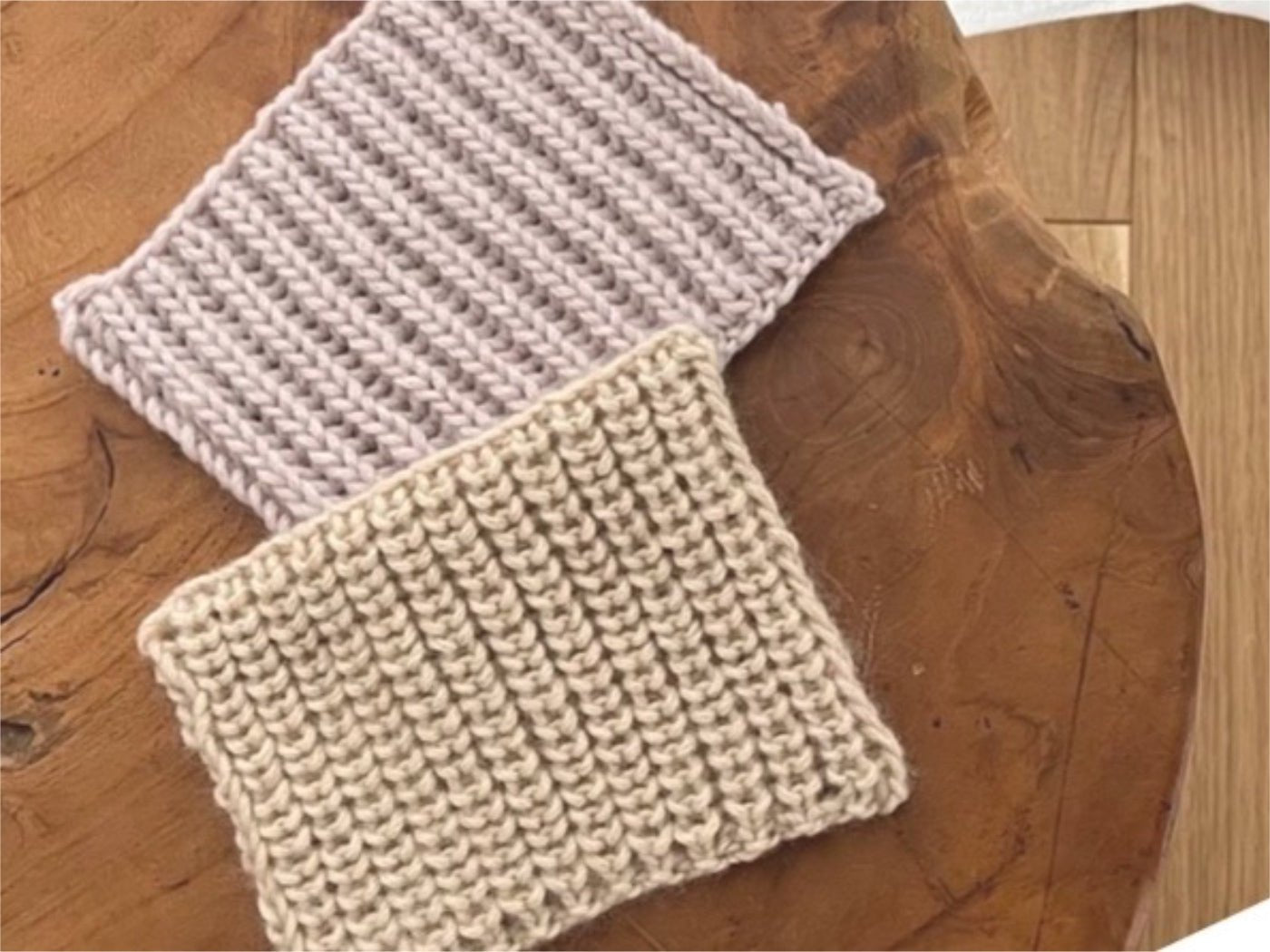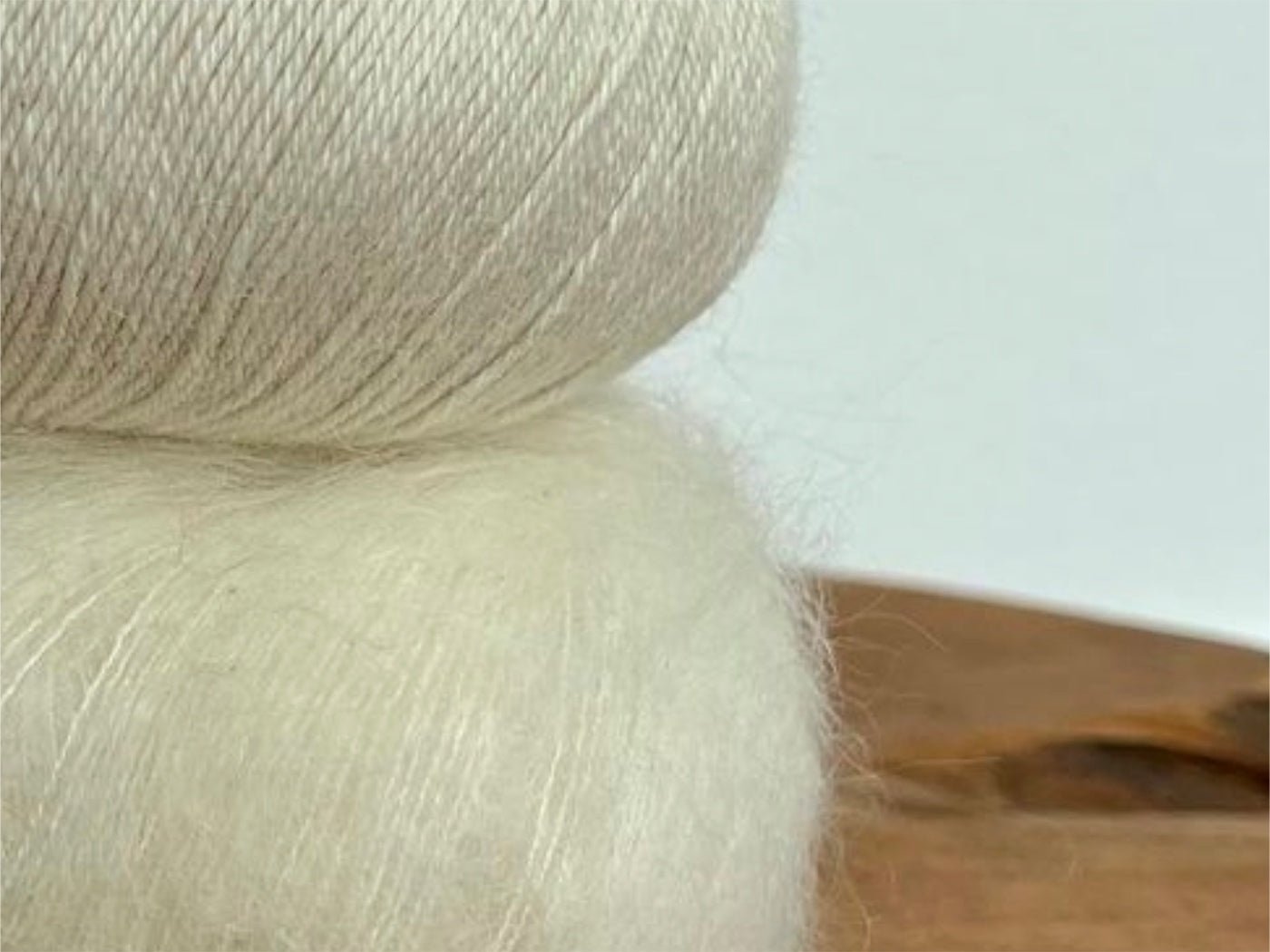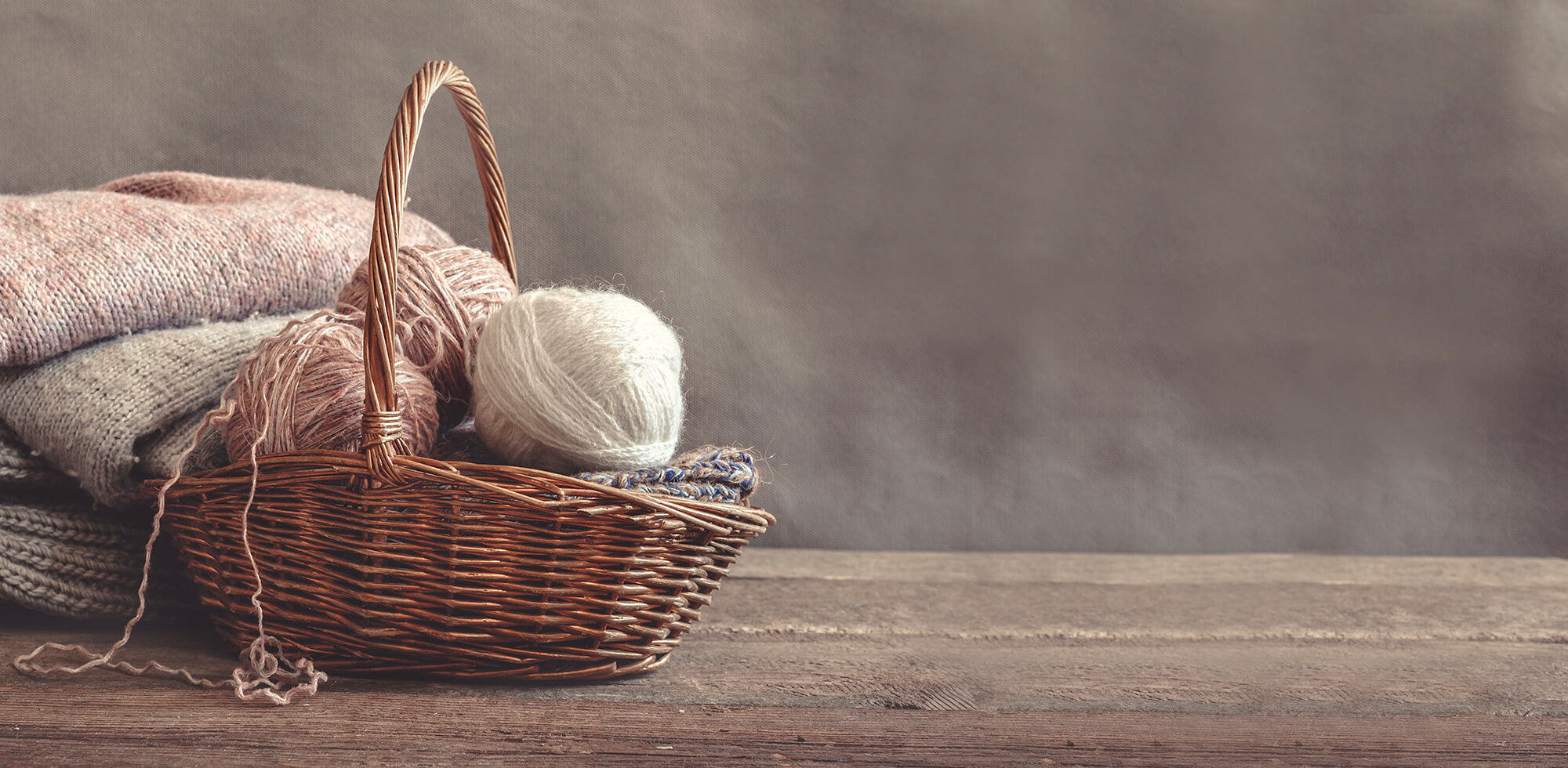By Claudia Ostrop
When tackling multicolour knits, stripes are an easy way to achieve beautiful results without a lot of counting. Thick block stripes, fine stripes, in a wild mix of bright colours or delicate and tone-in-tone, there are no limits to your imagination. A colourful pattern is created very easily and is also suitable for beginner knitters. The only catch is when knitting in the round: The end of each round is slightly higher than the beginning as the work spirals upwards, resulting in a “jog”. Fortunately, there´s lots that can be done!
This blog is all about how to prevent these unsightly small half-steps or at least how to cheat them away - so that nothing stands in the way of uninterrupted knitting fun!
How to Avoid “Jogs” When Knitting Stripes in the Round?

For flawless stripes in the round, the secret often lies at the beginning of the second round of a different colour. At the beginning, the stripes are knitted as usual:
Add on the new colour and knit a round. If you simply knit over the start of the round, the “jog” will form. The reason is this: the first stitch of a stripe is below the last stitch worked in that colour on that round. There are various techniques to prevent this. What they all have in common is that they soften the hard transition making it, more or less, invisible.
Lifting up a stitch

Knit the first row of the new colour as you normally would all the way to the end of the round, i.e. right up to the first stitch you knitted in this colour. Before starting the next round, use the right needle to lift the stitch below the first stitch of the left needle up on to the left needle. Knit these two stitches together.
By lifting the stitch of the round below, the difference in height between the two rounds is compensated. Now you can continue knitting the stripe as usual. All further rounds in this colour are knitted as usual.
Slipping the first stitch of the second round
Here, too on the round of the colour change, knit the first round as you normally would. When you get to round two, slip the first stitch of the round purl wise (wyif), then knit the rest of the round. In this way, the transition is optically evened out. You’ll be able to see that the row where you slipped the stitch is slightly different, but much less noticeable than a “jog”. All further rounds in this colour are knitted as usual.
Both methods are best suited for stripes of three rounds or more. With narrower stripes, it is easier to see the “jog”. But, it is not all bad news. There is still something that can be done:
Travelling “jogless” stripes
When using this method, a stitch marker should be used for the beginning of the round: Once you reach the end of the first round, the stitch marker is removed.
- For colour changes lifting a stitch: Knit the originally first stitch of the round as usual. Reposition the stitch marker and knit the next stitch together with the stitch below.
- For colour changes with slipped stitches: Slip the first stitch of the new round purl wise and reposition the stitch marker once again.
When you are ready to switch to a new colour, remove the stitch marker, knit one more stitch with your main colour, then place the stitch maker back on the new beginning of your round.
With each colour change, the stitch marker moves one stitch to the left. In order not to lose sight of the original beginning of the round, you can help yourself with a closable stitch marker or a small safety pin that is hung in the fabric to mark the "real" beginning of the round.
Repeat this sequence each time you want to change colours. The beginning of your round will “travel” one stitch each time, creating a faint spiral. Because the colour change no longer takes place in one spot, the transitions are even less noticeable than if you always pick up the first stitch in the same position.
"Helix Knitting" - Endless stripes in a spiral

Helix knitting is perfect for stripes that consist of only one round. What you perceive as individual striped rounds is, in reality, a set of endless spirals. As we introduce different colours, we will get the “barber pole” effect with colours moving up in continuous stripes, an optical illusion, so to speak.
It is best to try it yourself to understand the effect. Here is a small example. Use three colours of your choice. You must use three different ones:
Cast on 10 stitches on each of three double pointed needles. Now knit a first round: 1 needle in colour A, 1 needle in colour B and 1 needle in colour C. In the first round, knit another needle in colour C.
Now you are at the point where colour A is hanging “in waiting”: drop the colour C yarn and continue knitting with colour A (make sure not to twist the yarns). Knit 1 needle in colour A until you reach the point to knit with colour B. Continue with colour B to the end of the round and then on to the first needle of the round: Colour C is waiting there. Then knit 2 needles with colour A, continue with 1 needle in colour B, followed by 2 needles in colour C; 1 needle in colour A, 2 needles colour B.
Don't worry, it reads a lot more complicated than it is: whenever you reach the next free hanging yarn end, switch to that colour. After a short time, you will see beautiful stripes.
You can also knit with two or more colours in spirals. Simply divide the stitches/colours accordingly at the beginning.
“Jogless” single colour stripes
Helix knitting makes it possible to knit clean stripes. But what if you only want to knit a single round with a single colour?

Instead of starting the new round with the contrasting colour, first slip some stitches (in the main colour) onto the right needle without knitting them. Five or six stitches are fine. Attach the contrasting colour and knit one round. When the round is complete, slip the first contrasting stitch as if to knit.
Then the working strand of yarn and the end of the yarn are crossed on the back so that the end of the yarn lies over the working strand of yarn and is led away, towards the right. Next, with the left needle, pick up the stitch under the first (now slipped) one and knit one stitch out, but so that the yarn goes over the needle instead of under it. There is now a right inclined double stitch on the needle.
Now slip the stitches from the round of stripes back onto the left needle until you are back at the beginning of the round. Pick up the main colour and continue the round as normal, working the double stitch through the back leg. The tension can be regulated by (carefully) pulling on the yarn ends - the result is a smooth, practically invisible transition. Link

If all this seems too complicated at first glance, you can cheat a bit:
Cheat colour changes with purl "seam" stitches
The purl stitches on the sides, which optically simulate a kind of “seam” and can also ensure that a piece knitted in stockinette stitch does not become distorted in the round are part of some pullover designs. With a striped pattern, they have the charm that the colour change disappears in the depression that forms between the purl stitches and the knit stitches. And if the design doesn't actually provide for this, you can use your artistic freedom and simply position a purl stitch in the middle under the armpit!
Even with raglan yokes, you can avoid “jogs” in the stripes by positioning colour changes in such a way that they are swallowed up by a raglan seam if it is framed by purl stitches.
Of course, this small list does not claim to be complete. If you search the Internet for terms such as “jogless” knitting, helix knitting, knitting stripes in rounds, etc., you will find numerous helpful pages and explanations.
Hopefully this blog has given you a pointer in the right direction!
And now, have fun knitting those stripes!




